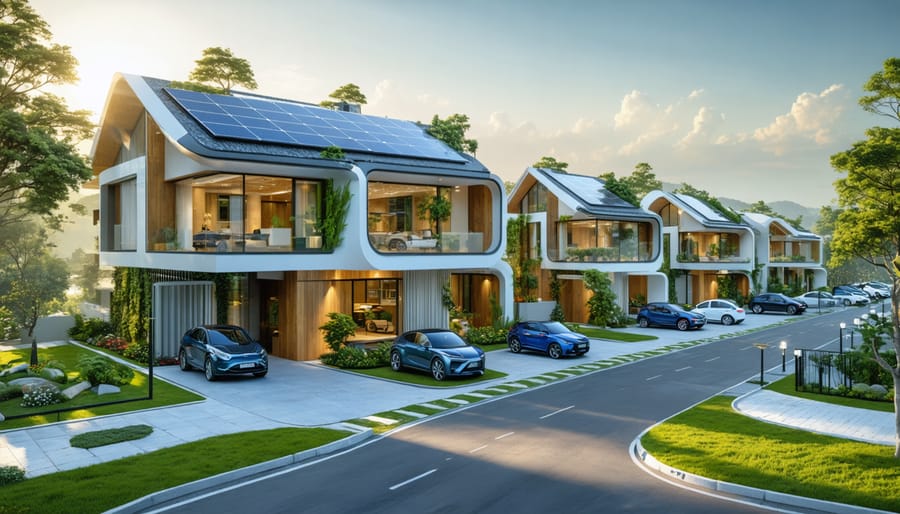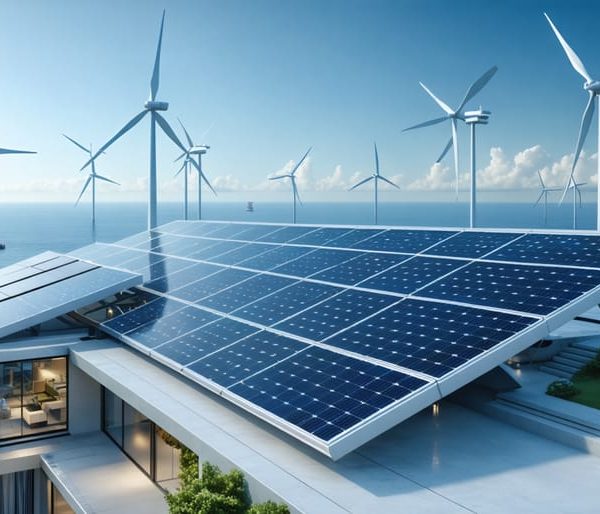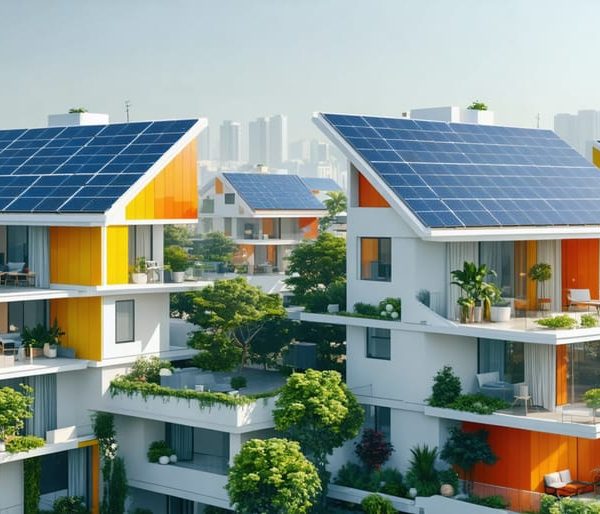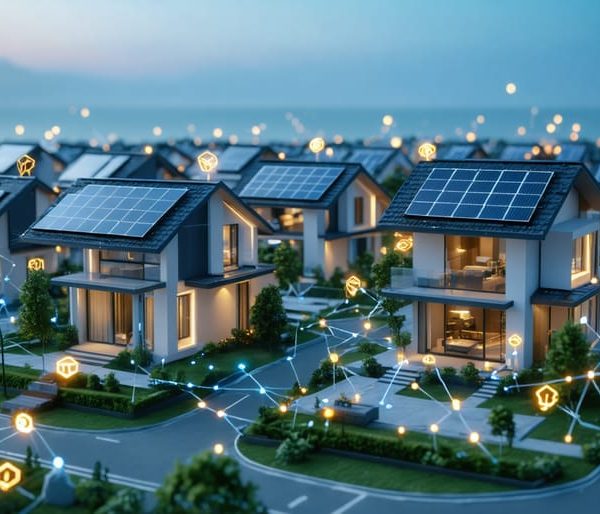Game-Changing Solar Materials That Will Transform Your Home’s Energy Future
The future of energy is unfolding right before our eyes, and it’s more exciting than ever. Groundbreaking technologies are revolutionizing how we power our homes and businesses, helping homeowners slash your energy bills while protecting our planet. From perovskite solar cells that capture sunlight more efficiently than traditional panels to innovative energy storage solutions that keep power flowing even after sunset, these emerging technologies are making sustainable living more accessible and affordable.
Imagine charging your electric vehicle with solar tiles that blend seamlessly into your roof, or powering your home with windows that generate electricity while remaining completely transparent. These aren’t science fiction concepts – they’re real innovations hitting the market today. Smart microgrids are transforming neighborhoods into self-sufficient energy communities, while artificial intelligence optimizes power consumption in real-time, ensuring not a single watt goes to waste.
For homeowners and property managers looking to stay ahead of the curve, understanding these emerging technologies isn’t just about being eco-friendly – it’s about making smart investments that pay dividends for years to come. Let’s explore the game-changing innovations that are reshaping our energy landscape and how you can benefit from them.

Perovskite Solar Cells: The Next Generation of Solar Power
Why Perovskites Matter for Your Home
Imagine cutting your energy bills in half while helping the environment – that’s what perovskite solar cells promise for your home. These next-generation solar materials are creating quite a buzz in the renewable energy world, and for good reason.
Perovskite solar cells are lighter, more flexible, and potentially much cheaper than traditional silicon panels. Think of them as a thin film that can be applied to various surfaces – from your roof tiles to your windows. They’re so versatile that you could potentially turn any sun-facing surface of your home into an energy-generating powerhouse.
What makes perovskites particularly exciting for homeowners is their exceptional performance in low-light conditions. Unlike conventional solar panels, these materials can generate electricity even on cloudy days or from indirect sunlight, making them ideal for homes in various climate zones.
The cost savings are impressive too. Early estimates suggest that perovskite solar installations could cost up to 40% less than traditional solar panels while delivering comparable or better energy output. For a typical household, this could mean achieving energy independence at a fraction of the current cost.
While perovskite technology is still emerging, many homeowners are already planning to incorporate these innovative materials into their future home improvements. As the technology matures, we’re likely to see more flexible installation options and even more impressive energy-saving potential.
Current Limitations and Future Solutions
While emerging energy technologies show incredible promise, they still face several challenges that researchers and manufacturers are actively working to overcome. Current solar panels, for instance, typically lose about 0.5% of their efficiency each year, and many early battery storage systems show significant capacity degradation after repeated charging cycles.
However, innovative solutions are already in development. Scientists are exploring self-healing materials that can repair microscopic damage automatically, potentially extending the lifespan of solar panels by up to 50%. Advanced battery chemistry improvements are addressing capacity loss, with new designs showing only minimal degradation even after thousands of cycles.
Durability in extreme weather conditions remains another key focus area. Next-generation solar panels are being designed with enhanced UV protection and improved heat management systems, while wind turbine manufacturers are developing blades with advanced composite materials that better resist wear and tear.
Cost remains a significant barrier for many homeowners, but prices continue to trend downward as manufacturing scales up and technologies mature. Industry experts predict that by 2025, many emerging energy technologies will achieve price parity with traditional energy sources, making them more accessible to the average consumer.
The future looks particularly bright for hybrid systems that combine multiple renewable sources with smart storage solutions, offering more reliable and efficient energy generation while minimizing environmental impact.
Transparent Solar Panels: Making Every Window Count
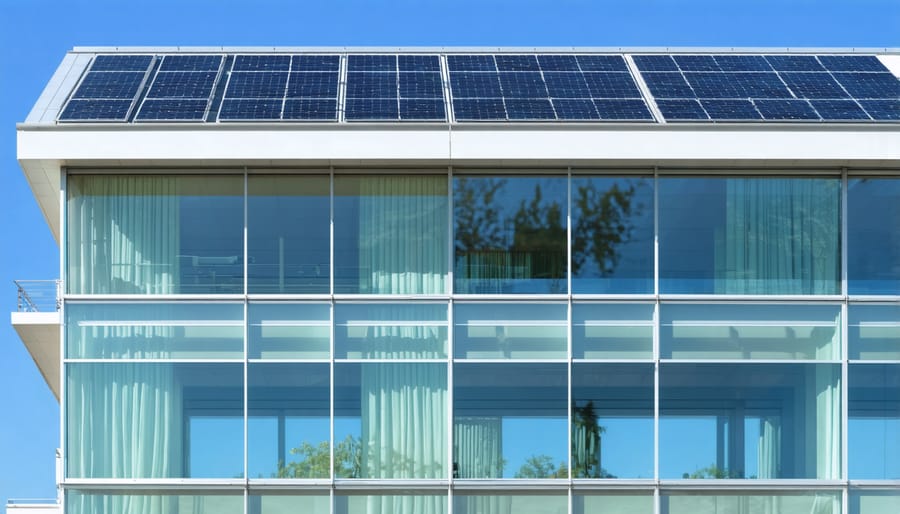
Installation Options for Your Home
Transforming your home with transparent solar panels is more straightforward than you might think. These innovative panels can be integrated into existing windows or installed as new fixtures, offering multiple integrated solar solutions for your property.
For existing windows, retrofit options allow you to apply transparent solar films that maintain natural light while generating power. This process typically involves professional installation and takes just a few hours per window. New construction or full window replacement offers the opportunity to install factory-made transparent solar glass, which provides optimal efficiency and seamless integration.
Consider starting with south-facing windows, where sunlight exposure is typically highest. Many homeowners begin with smaller installations, such as sunrooms or large picture windows, before expanding to other areas. Smart monitoring systems can be added to track energy production and optimize performance.
Before installation, consult with certified solar professionals who can assess your home’s specific needs and potential energy generation capacity. They’ll help determine the most effective placement and configuration for maximum energy harvesting while maintaining your home’s aesthetic appeal.
Multi-Junction Solar Cells: Maximum Efficiency for Your Roof
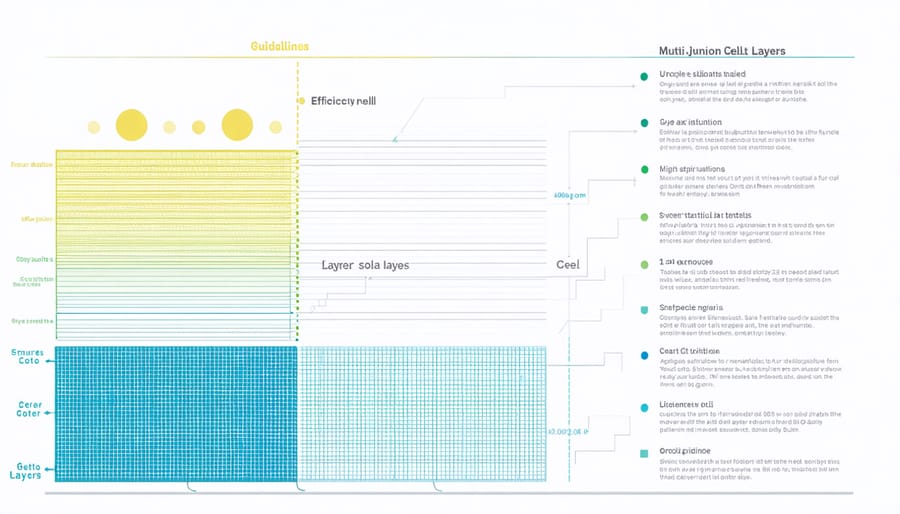
Cost vs. Performance Analysis
When considering emerging energy technologies, the initial investment versus long-term savings is a crucial factor for homeowners. Modern cost-effective solar technology offers an impressive return on investment, typically paying for itself within 5-7 years through reduced utility bills.
For a typical 2,000-square-foot home, installing new energy systems might cost between $15,000 and $25,000. However, federal tax incentives can reduce this by up to 30%, and state rebates offer additional savings. Monthly energy bills often decrease by 50-70%, resulting in annual savings of $1,200-$1,800 for the average household.
Beyond direct cost savings, these technologies increase property values by an average of 4.1%. Maintenance costs are minimal, with most systems requiring only basic cleaning and occasional professional check-ups. When factoring in rising energy costs and improved system efficiency, the long-term financial benefits make emerging energy technologies an increasingly attractive investment for environmentally conscious homeowners.
Smart Solar Materials: Self-Cleaning and Adaptive Technologies
Imagine solar panels that clean themselves and adapt to changing weather conditions – this is no longer science fiction but a reality with today’s smart solar technology. These innovative materials are revolutionizing how we harness solar energy while drastically reducing maintenance needs.
Self-cleaning solar panels use a specialized coating that responds to sunlight, breaking down dirt and organic matter that lands on their surface. When it rains, the debris simply slides off, keeping the panels operating at peak efficiency without manual cleaning. Think of it as having a built-in maintenance crew working 24/7!
Adaptive solar materials take this innovation even further by adjusting their properties based on environmental conditions. During intense sunlight, these materials can modify their transparency to capture optimal energy levels while preventing overheating. In lower light conditions, they become more receptive to available sunlight, ensuring consistent energy production throughout the day.
For homeowners, these advances mean less time spent on maintenance and more reliable energy generation. Commercial properties benefit from reduced operational costs and improved return on investment. The best part? These materials are becoming more affordable and accessible, making sustainable energy solutions more practical for everyone.
The future of solar energy is becoming clearer – and cleaner – thanks to these self-maintaining innovations that work smarter, not harder.
As we’ve explored the landscape of emerging energy technologies, it’s clear that we’re standing at the threshold of an exciting transformation in how we power our homes and businesses. These innovations aren’t just theoretical concepts – they’re practical solutions ready to revolutionize our approach to energy consumption and production.
For homeowners considering the next steps, the path forward is both clear and promising. Start by conducting an energy audit of your property to identify where these new technologies could have the most impact. Consider beginning with smart energy management systems, which offer an accessible entry point into the world of advanced energy solutions. From there, you can gradually incorporate other technologies like next-generation solar panels or advanced battery storage systems as your needs and budget allow.
The impact of these emerging technologies extends far beyond individual households. As more homeowners adopt these innovations, we’re collectively building a more resilient and sustainable energy infrastructure. The reduced carbon footprint, lower energy bills, and increased energy independence are benefits that ripple throughout our communities.
Remember, you don’t have to implement everything at once. Take small, strategic steps toward modernizing your home’s energy systems. Stay informed about new developments, connect with local energy professionals, and join community groups focused on sustainable energy. The future of home energy is bright, and by embracing these technologies, you’re not just improving your home – you’re participating in a global shift toward a more sustainable future.

